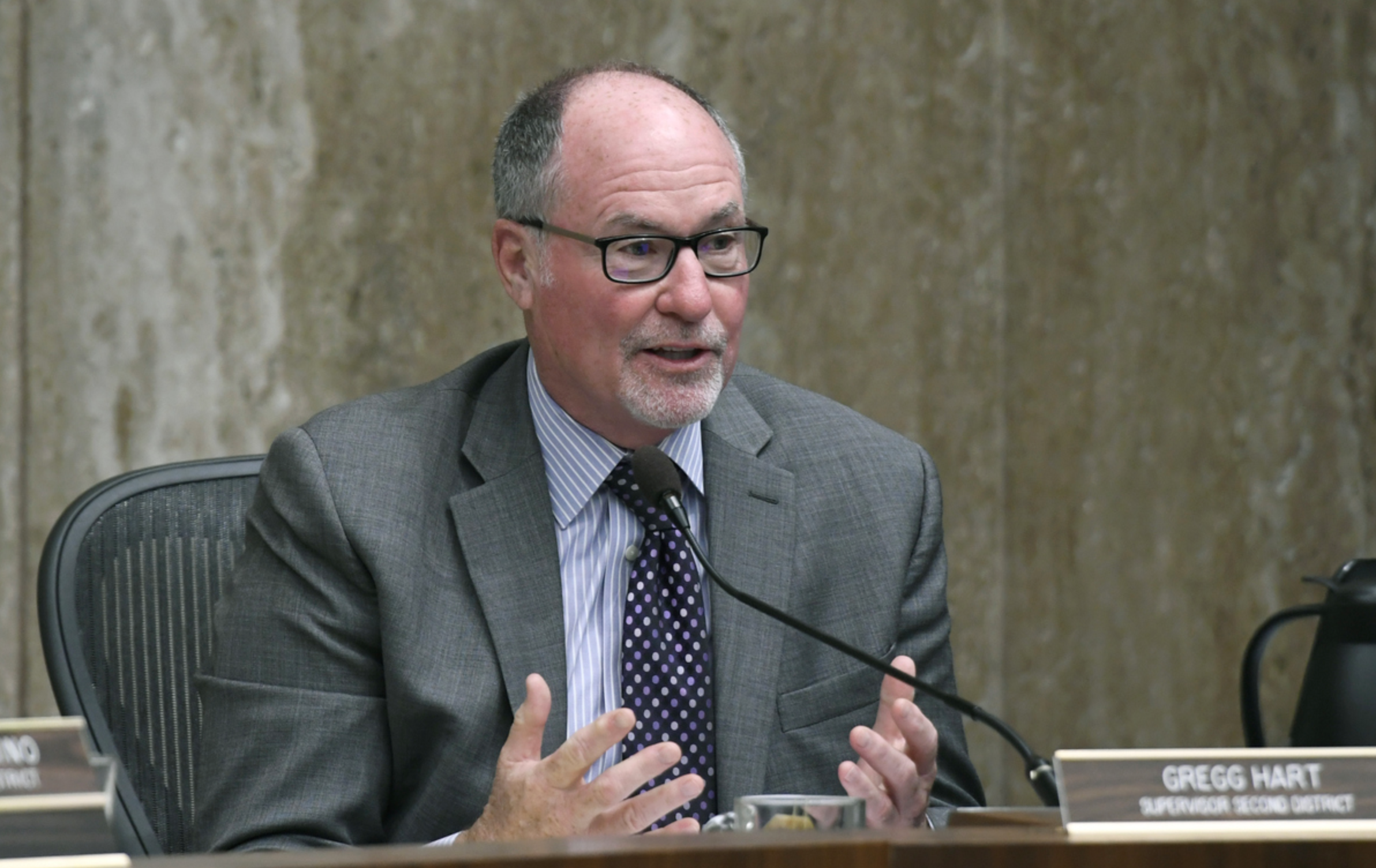COVID and Protests Dominate Santa Barbara County Budget Hearings
Public Calls to Redirect Public Safety Money, Board Approves Equity Fund and Budget

Planning for the future amid a pandemic may seem like a shot in the dark, but the Santa Barbara County Board of Supervisors voted 4-1 on Tuesday to approve next year’s budget, which takes into account the county’s projected $21.7 million loss in revenue as a result of the stay-at-home order and the looming question of how much state and federal relief funding the county will receive, if any.
“Today marks the adoption of our budget for the new year 2021,” said County CEO Mona Miyasato. “But this year the budget also represents a transition. We’re moving in that place that is a new beginning and an ending, and that is why there is so much uncertainty — that in itself is a sign that we are in a transition.
“How we do this budget today will likely set our path for the next several years to come.”
Budget Director Jeff Frapwell said that because the county maintained “very strong” strategic reserves prior to COVID-19 and because it has excess cannabis tax revenue, those funds will help backfill revenue losses from the pandemic. For example, $3 million in cannabis taxes and $3.8 million in strategic reserves will be used to cover revenue losses in the county’s Department of Social Services, which provides food, health care, and child and adult protective services.
Get the top stories in your inbox by signing up for our daily newsletter, Indy Today.
“Many times I’ve asked myself during a lot of these hearings, ‘Is it worth taking all of the abuse to support the cannabis industry?’” 5th District Supervisor Steve Lavagnino said. “ … When I look at the budget this year, I say the answer is yes. It is worth it. I think we heard that the services are going to be saved. This budget without cannabis revenue would have been an unmitigated disaster.”
Over the course of the five-hour hearing, the supervisors were mostly in agreement with the budget as drafted, but they wrangled with how to best distribute the county’s $688,000 of onetime funding. They agreed to allocate some funds to Animal Services, a department still searching for a new director and spoken about by several members of the public who lamented its need for a full-time veterinarian, and also a court-orders program in Behavioral Wellness for those with serious mental illness.
Second District Supervisor Gregg Hart also suggested allocating $500,000 for an equity fund as a way to proactively respond to the murder of George Floyd and the subsequent Black Lives Matter protests around police brutality against black people and people of color, which the board agreed with and voted for, excepting 4th District Supervisor Peter Adam.
“There is one giant issue that is brought forward by events of the past couple of weeks,” Hart said. “The killing of George Floyd has galvanized this country, and people in our community are demanding that the government respond to the significant systemic racism issues that exist in our communities across the country,” Hart said.
He suggested creating the $500,000 equity fund so that the county would have a tangible way to address racism and other discrimination in the community. Though he said it was unclear how those funds will be used right now, he believes there will be increasing constituent demands for which the county should prepare.
“I would hate for us to be in a position where we look to our budget and say we don’t have a way to respond to legitimate, important requests from the community,” Hart said. “I think it would send a strong message that we are ready and prepared to engage seriously on issues that are roiling our country.”
Public Safety got the most interest from public commenters, largely due to the recent nationwide protests against police brutality. Many community members called for the defunding of local police departments and the County Sheriff’s Office. With the jail population at a historic low because of COVID-19, most who spoke on the public safety part of the budget argued that there is no need to “go back to normal.”
“There is no clearer visual of the inequities embedded in our bail and criminal justice system than when the attorneys, judge, bailiff, and court staff are all predominantly white while the accused is a person of color,” said Danielle De Smeth, a criminal defense attorney. “Budgets are statements of values, and you have control over leveling many of these inequities. There is no reason Santa Barbara can’t lead the way in redesigning public safety.”
De Smeth recommended reinvesting some of the public safety money into education, prevention, and treatment instead of wasting it on someone “languishing in a jail cell.”
The supervisors are holding a hearing on Thursday to address racism in the criminal justice system and invite the public to give input on systemic changes that might be implemented in Santa Barbara County. The board may also send questions or recommendations to the District Attorney’s and Sheriff’s Offices. The hearing will be live-streamed here on Thursday at 9 a.m.
At the Santa Barbara Independent, our staff is working around the clock to cover every aspect of this crisis — sorting truth from rumor. Our reporters and editors are asking the tough questions of our public health officials and spreading the word about how we can all help one another. The community needs us — now more than ever — and we need you in order to keep doing the important work we do. Support the Independent by making a direct contribution or with a subscription to Indy+.



